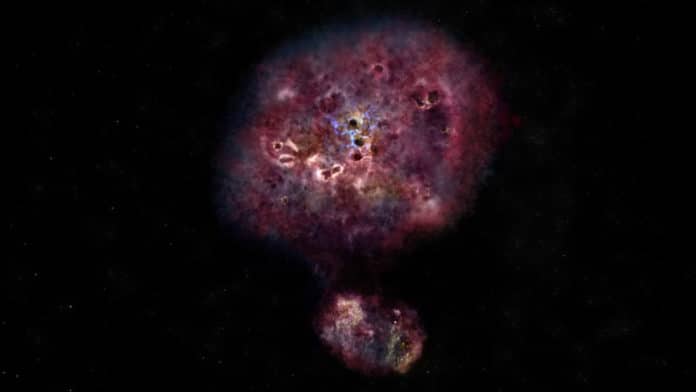Using Atacama Large Millimeter/submillimeter Array (ALMA), astronomers at the National Radio Astronomy Observatory (NRAO) have spotted most distant galaxy ever- MAMBO-9. Astronomers have spotted the light of a massive galaxy seen only 970 million years after the Big Bang.
It is the most distant dusty star-forming galaxy that has ever been observed.
In reality, the galaxy’s light was already detected a decade ago using the Max-Planck Millimeter BOlometer (MAMBO) instrument on the IRAM 30-meter telescope in Spain and the Plateau de Bure Interferometer in France. But, that observation was not sensitive enough to reveal the distance of the galaxy.
What’s more, this even generated doubt on the galaxy’s existence as scientists were unable to detect it with other telescopes.
ALMA’s sensitivity benefitted this discovery- enabled scientists to determine the distance of MAMBO-9.
Caitlin Casey of the University of Texas at Austin and lead author of the study said, “We found the galaxy in a new ALMA survey specifically designed to identify dusty star-forming galaxies in the early universe. And what is special about this observation is that this is the most distant dusty galaxy we have ever seen in an unobstructed way.”
Often, the galaxies, closer to us- obstruct the light of distant galaxies. These galaxies in front work as a gravitational lens: they bend the light from the more distant galaxy. This lensing effect makes it easier for telescopes to spot distant objects (this is how ALMA could see galaxy SPT0311-58). But it also distorts the image of the object, making it harder to make out the details.
In this study, astronomers directly observed MAMBO-9, i.e., without the lens, and this lead astronomers to estimate its mass. Astronomers found that the mass of gas and dust in the galaxy is enormous: ten times more than all the stars in the Milky Way. It suggests- the galaxy is yet to build most of its stars.
Casey expects more discoveries further in the ALMA survey, which will give insight into how common they are, how these massive galaxies formed so early in the universe, and why they are so dusty.
The study is published in The Astrophysical Journal.
